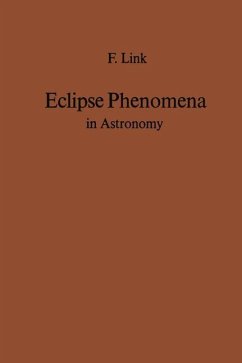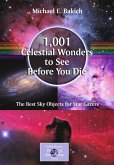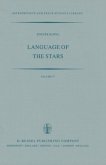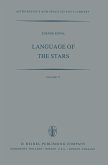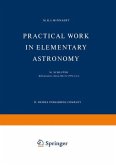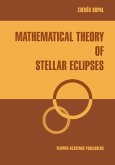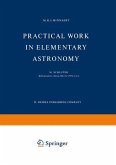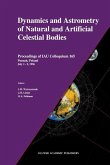F. Link
Eclipse Phenomena in Astronomy
F. Link
Eclipse Phenomena in Astronomy
- Broschiertes Buch
- Merkliste
- Auf die Merkliste
- Bewerten Bewerten
- Teilen
- Produkt teilen
- Produkterinnerung
- Produkterinnerung
Eclipses and problems related to them have been, from ancient times, one of the main interests not only of astronomers but indeed of all mankind. The appearance of eclipses, lunar as well as solar, excited the imagination of our ancestors and provoked their curiosity to explain their origin or to use them for the further investigation of celestial bodies. With the present development of astronomy the eclipse problems are not limited to the Sun and the Moon, as in the past, but have been progressively extended to the components of the solar system and to domains of radiations other than optical…mehr
Andere Kunden interessierten sich auch für
![1,001 Celestial Wonders to See Before You Die 1,001 Celestial Wonders to See Before You Die]() Michael E. Bakich1,001 Celestial Wonders to See Before You Die36,99 €
Michael E. Bakich1,001 Celestial Wonders to See Before You Die36,99 €![Language of the Stars Language of the Stars]() Zdenek KopalLanguage of the Stars77,99 €
Zdenek KopalLanguage of the Stars77,99 €![Language of the Stars Language of the Stars]() Zdenek KopalLanguage of the Stars77,99 €
Zdenek KopalLanguage of the Stars77,99 €![Practical Work in Elementary Astronomy Practical Work in Elementary Astronomy]() Marcel G. J. MinnaertPractical Work in Elementary Astronomy77,99 €
Marcel G. J. MinnaertPractical Work in Elementary Astronomy77,99 €![Mathematical Theory of Stellar Eclipses Mathematical Theory of Stellar Eclipses]() Zdenek KopalMathematical Theory of Stellar Eclipses38,99 €
Zdenek KopalMathematical Theory of Stellar Eclipses38,99 €![Practical Work in Elementary Astronomy Practical Work in Elementary Astronomy]() Marcel G. J. MinnaertPractical Work in Elementary Astronomy77,99 €
Marcel G. J. MinnaertPractical Work in Elementary Astronomy77,99 €![Dynamics and Astrometry of Natural and Artificial Celestial Bodies Dynamics and Astrometry of Natural and Artificial Celestial Bodies]() I.M. Wytrzyszczak / J.H. Lieske / R.A. Feldman (Hgg.)Dynamics and Astrometry of Natural and Artificial Celestial Bodies154,99 €
I.M. Wytrzyszczak / J.H. Lieske / R.A. Feldman (Hgg.)Dynamics and Astrometry of Natural and Artificial Celestial Bodies154,99 €-
-
-
Eclipses and problems related to them have been, from ancient times, one of the main interests not only of astronomers but indeed of all mankind. The appearance of eclipses, lunar as well as solar, excited the imagination of our ancestors and provoked their curiosity to explain their origin or to use them for the further investigation of celestial bodies. With the present development of astronomy the eclipse problems are not limited to the Sun and the Moon, as in the past, but have been progressively extended to the components of the solar system and to domains of radiations other than optical ones. Our intention is to give an account of all these problems in their theoretical and experimental form with some additions on their historical development. Those of our readers not interested in the historical side may feel at first inclined to ignore this part, but we are sure that eventually they will be sufficiently interested to repair this omission.
Produktdetails
- Produktdetails
- Verlag: Springer / Springer Berlin Heidelberg / Springer, Berlin
- Artikelnr. des Verlages: 86013333, 978-3-642-86477-3
- Softcover reprint of the original 1st ed. 1969
- Seitenzahl: 284
- Erscheinungstermin: 5. Juni 2012
- Englisch
- Abmessung: 235mm x 155mm x 16mm
- Gewicht: 438g
- ISBN-13: 9783642864773
- ISBN-10: 3642864775
- Artikelnr.: 40768905
- Herstellerkennzeichnung Die Herstellerinformationen sind derzeit nicht verfügbar.
- Verlag: Springer / Springer Berlin Heidelberg / Springer, Berlin
- Artikelnr. des Verlages: 86013333, 978-3-642-86477-3
- Softcover reprint of the original 1st ed. 1969
- Seitenzahl: 284
- Erscheinungstermin: 5. Juni 2012
- Englisch
- Abmessung: 235mm x 155mm x 16mm
- Gewicht: 438g
- ISBN-13: 9783642864773
- ISBN-10: 3642864775
- Artikelnr.: 40768905
- Herstellerkennzeichnung Die Herstellerinformationen sind derzeit nicht verfügbar.
1. Lunar Eclipses.- 1.1. Introduction to Lunar Eclipses.- 1.2. Photometrical Theory of the Umbra.- 1.3. Photometry of Lunar Eclipses.- 1.4. Lunar Luminescence.- 1.5. Increase of the Shadow.- 1.6. Thermal Phenomena during Lunar Eclipses.- 2. Eclipses of Artificial Earth Satellites.- 2.1. Preliminary Remarks.- 2.2. General Conditions of Visibility.- 2.3. Ephemeris of the Eclipse.- 2.4. Photometrical Theory of the Shadow.- 2.5. General Transmission Coefficient.- 2.6. Simplified Presentation of the Eclipse Theory.- 2.7. Eclipse Observed from the Satellite.- 2.8. Secondary Illuminations.- 2.9. Fesenkov's Treatment of the Eclipse Problem.- 2.10. Observing Methods Used for Passive Satellites.- 2.11. Work at the Naval Ordnance Test Station, China Lake, California.- 2.12. Work at Ondfejov Observatory on Echo-2 Eclipses.- 2.13. Work at Valensole Station.- 2.14. Active Satellites of SR Series.- 2.15. Eclipses of the Satellite SR-I.- 2.16. Work of Arcetri Group.- 2.17. Work of Slough Group.- 3. Twilight Phenomena.- 3.1. Different Components of the Twilight.- 3.2. Night Light Correction.- 3.3. Illumination of the Upper Atmosphere.- 3.4. Fundamental Problems of Twilight Phenomena.- 4. Occultations and Eclipses by Other Planets.- 4.1. General Remarks.- 4.2. Dioptrics of the Thin Planetary Atmosphere.- 4.3. Planetary Atmosphere from the Refraction Standpoint.- 4.4. Basic Equations for the Far Occultation.- 4.5. Theoretical Course of a Far Occultation.- 4.6. Occultation of Regulus by Venus, July 7, 1959.- 4.7. Occultation of ? Arietis by Jupiter, November 20, 1952.- 4.8. Near Occultation by the Planet.- 4.9. Eclipses of Phobos.- 4.10. Reduction of Eclipse Curves of Jovian Satellites.- 4.11. Eropkin's Eclipse Curves of Jovian Satellites.- 4.12. Frost Phenomena on Jovian Satellitesduring Their Eclipses.- 4.13. Terrestrial Occultation Observed from the Moon.- 5. Transits of Planets over the Sun.- 5.1. Introductory Remarks.- 5.2. Refraction in the Planetary Atmosphere.- 5.3. Refraction Image of the Sun.- 5.4. Discussion of Past Transits.- 5.5. Simplified Discussion of the Transit Phenomena.- 5.6. Lomonosov's Phenomenon.- 5.7. Extension of the Cusps of Venus.- 5.8. Explanations of the Cusps Extension.- 5.9. Edson's Work on Cusps Extension.- 5.10. New Investigations on Cusps Extension.- 6. Eclipse Phenomena in Radio Astronomy.- 6.1. Introduction.- 6.2. Occultation Scene.- 6.3. Occultations of Radio Sources by the Moon.- 6.4. Numerical Example.- 6.5. Occultation of Radio Source by Solar Corona.- 6.6. Modification of Light Intensity.- 6.7. Observations of Coronal Occultations.- 6.8. Occultation of the Mariner-IV Space Probe by Mars.- 6.9. Further Implications of the Mariner-IV Mission.- 6.10. Occultation of the Mariner-V Space Probe by Venus.- 7. Einstein's Deflection of Light.- 7.1. Einstein's Deflection of Light.- 7.2. Dioptrics of Einstein's Deflection.- 7.3. Photometry of Einstein's Deflection.- 7.4. Other Expression of Illumination.- 7.5. Illumination by Stellar Disk.- 7.6. Normalised Gravitational Occultation.- 7.7. Images of the Occulted Star.- 7.8. Tichov's Investigations.- 7.9. Refsdal's Investigation.- 7.10. Liebes' Investigations.- 7.11. Consequences of Einstein's Deflection in the Stellar Universe.- 7.12. Gravitational Passage or Occultation.- 7.13. History of Einstein's Photometrical Effect.
1. Lunar Eclipses.- 1.1. Introduction to Lunar Eclipses.- 1.2. Photometrical Theory of the Umbra.- 1.3. Photometry of Lunar Eclipses.- 1.4. Lunar Luminescence.- 1.5. Increase of the Shadow.- 1.6. Thermal Phenomena during Lunar Eclipses.- 2. Eclipses of Artificial Earth Satellites.- 2.1. Preliminary Remarks.- 2.2. General Conditions of Visibility.- 2.3. Ephemeris of the Eclipse.- 2.4. Photometrical Theory of the Shadow.- 2.5. General Transmission Coefficient.- 2.6. Simplified Presentation of the Eclipse Theory.- 2.7. Eclipse Observed from the Satellite.- 2.8. Secondary Illuminations.- 2.9. Fesenkov's Treatment of the Eclipse Problem.- 2.10. Observing Methods Used for Passive Satellites.- 2.11. Work at the Naval Ordnance Test Station, China Lake, California.- 2.12. Work at Ondfejov Observatory on Echo-2 Eclipses.- 2.13. Work at Valensole Station.- 2.14. Active Satellites of SR Series.- 2.15. Eclipses of the Satellite SR-I.- 2.16. Work of Arcetri Group.- 2.17. Work of Slough Group.- 3. Twilight Phenomena.- 3.1. Different Components of the Twilight.- 3.2. Night Light Correction.- 3.3. Illumination of the Upper Atmosphere.- 3.4. Fundamental Problems of Twilight Phenomena.- 4. Occultations and Eclipses by Other Planets.- 4.1. General Remarks.- 4.2. Dioptrics of the Thin Planetary Atmosphere.- 4.3. Planetary Atmosphere from the Refraction Standpoint.- 4.4. Basic Equations for the Far Occultation.- 4.5. Theoretical Course of a Far Occultation.- 4.6. Occultation of Regulus by Venus, July 7, 1959.- 4.7. Occultation of ? Arietis by Jupiter, November 20, 1952.- 4.8. Near Occultation by the Planet.- 4.9. Eclipses of Phobos.- 4.10. Reduction of Eclipse Curves of Jovian Satellites.- 4.11. Eropkin's Eclipse Curves of Jovian Satellites.- 4.12. Frost Phenomena on Jovian Satellitesduring Their Eclipses.- 4.13. Terrestrial Occultation Observed from the Moon.- 5. Transits of Planets over the Sun.- 5.1. Introductory Remarks.- 5.2. Refraction in the Planetary Atmosphere.- 5.3. Refraction Image of the Sun.- 5.4. Discussion of Past Transits.- 5.5. Simplified Discussion of the Transit Phenomena.- 5.6. Lomonosov's Phenomenon.- 5.7. Extension of the Cusps of Venus.- 5.8. Explanations of the Cusps Extension.- 5.9. Edson's Work on Cusps Extension.- 5.10. New Investigations on Cusps Extension.- 6. Eclipse Phenomena in Radio Astronomy.- 6.1. Introduction.- 6.2. Occultation Scene.- 6.3. Occultations of Radio Sources by the Moon.- 6.4. Numerical Example.- 6.5. Occultation of Radio Source by Solar Corona.- 6.6. Modification of Light Intensity.- 6.7. Observations of Coronal Occultations.- 6.8. Occultation of the Mariner-IV Space Probe by Mars.- 6.9. Further Implications of the Mariner-IV Mission.- 6.10. Occultation of the Mariner-V Space Probe by Venus.- 7. Einstein's Deflection of Light.- 7.1. Einstein's Deflection of Light.- 7.2. Dioptrics of Einstein's Deflection.- 7.3. Photometry of Einstein's Deflection.- 7.4. Other Expression of Illumination.- 7.5. Illumination by Stellar Disk.- 7.6. Normalised Gravitational Occultation.- 7.7. Images of the Occulted Star.- 7.8. Tichov's Investigations.- 7.9. Refsdal's Investigation.- 7.10. Liebes' Investigations.- 7.11. Consequences of Einstein's Deflection in the Stellar Universe.- 7.12. Gravitational Passage or Occultation.- 7.13. History of Einstein's Photometrical Effect.

